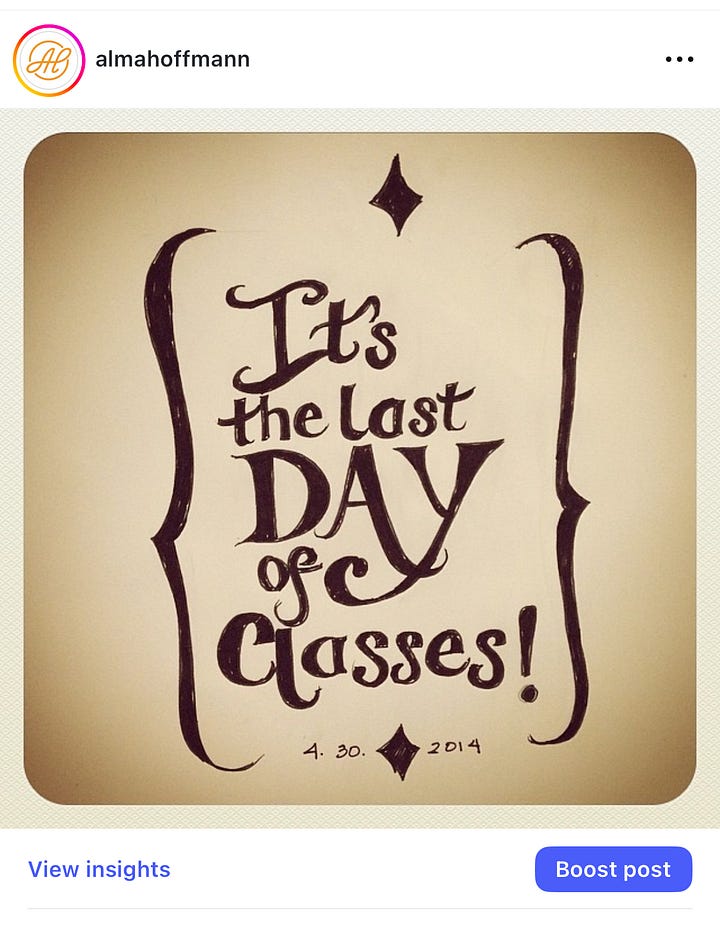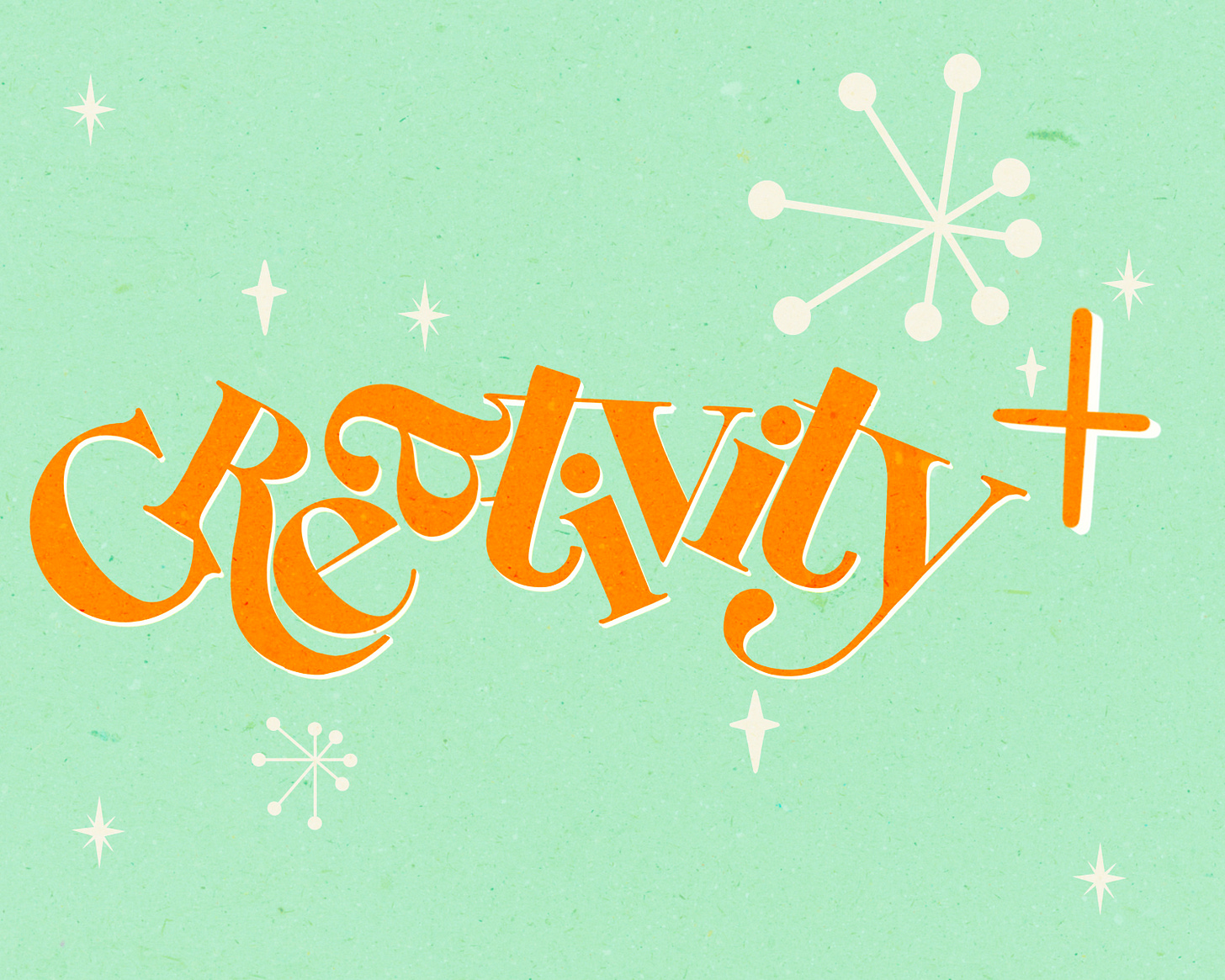Textbooks are useful until they are not. For the most part, I love the Art Appreciation book we have but there are topics not covered or if they are covered, it is not to my liking. Case in point is the topic of creativity. Throughout the semester the constant question in the students’ essays was “where do the guest speakers get so many ideas from? Or how do they get so many ideas to make so much work?” On the comments section of the evaluation, I would always type “ask”.
As the semester is coming to an end, I asked the class which topics they would like to either cover or revisit. There were two answers: color and creativity. Last week I revisited color. I added subtopics such as color palettes, color and meaning, color and politics, color and the media, color and marketing, and color and literature. I also talked about my work. Then we went to the Mobile Art Association members’ show to see the work on display. They had to choose an artwork and identify the dominant and subdominant color palette and explain how it helped or did not help the composition. To my surprise they got into it. I was very pleased to see them asking questions and trying to determine one thing or another. A little test they had to pass was to find my work. Some did and they were quite excited about it.
This coming week is the last week of classes. Tomorrow I will aim to cover creativity. I hope to also give them practical and timed exercises to push them to pull their inner resources to make connections otherwise not considered. To prepare, I did some research with the goal to explain to non art majors what creativity is and how it works. This is a daunting task for sure. How can one properly define and explain all the layers of creativity, a creative life, creative stages, and creative outputs in one hour? But as daunting as it might be, when a class is curious about something, you go there simply because they are asking. I love it. I love the curiosity and even though it took me a great chunk of time, I had so much fun.
While I was researching I came across the work of Dr. Arne Dietrich, professor of cognitive neuroscience at the American University of Beirut. Dr. Dietrich published an article titled Types of Creativity in the Psychonomic Bulletin & Review in 2019. As it turns out, I hit the jackpot with the article.
Dr. Dietrich’s position is that we have not done much progress in understanding creativity and how it works. He argues that our traditional reliance on the contrast between divergent and convergent thinking is not sufficient to explain creative thinking. He believes the divergent/convergent model is incoherent since we are capable of reaching creative solutions in both modes of thinking. Thus, it would stand to reason that convergence of thought is as valid and legitimate approach as divergence is. This got my attention for sure and my visual ears perked up. While reading the article I had to acknowledge that it is true. Sometimes divergent thinking leads to creative solutions. Hence, there are plenty of exercises of finding similarities in two unrelated things or open ended problem questions around. But it is also true that thinking inside the box, sort of speak, can lead to equally valid and creative solutions.
The opening paragraph of the article gave me a lot to think about. He states the following:
“Creativity is the fountainhead of our civilization and a defining characteristic of what makes us human. But for all its prominence at the apex of human mental faculties, we know next to nothing about the cognitive and neural mechanisms that generate creative ideas.”
He continues to say that we do not have “a single cognitive or neural mechanism to explain the extraordinary creative capacity of an Einstein or a Shakespeare.” Alternatively, he proposes three types of creativity. These are the Deliberate Mode, the Spontaneous Mode, and the Flow Mode. I have to acknowledge that these models appealed to me because of my personal experience. However, I understand that my personal experience is not enough to provide a solid scientific proof but I was able to identity myself with these three models. I will explain later after I define these models.
The Deliberate Mode (DM) is a purposeful and goal oriented process of trial and error iterations. Think of the daily practice of an instrument or a process where a list of chords are practiced or the dance practice where there is a list of steps to a choreography. Or the problem solving process of going over a list of steps as a process of elimination to see which one works and which does not. Often in my design classes with Alan Mickelson at Iowa State University, he had us come up with a list of things to try. We would look at professional work and make a list of the techniques that were used to try them one by one. I loved that. It took the romantic idea of inspiration out of the equation. In other words, we are very alert, conscious, and proceeded to solve a design problem almost like a science experiment. It is an intentional approach to visual problem solving.
The Spontaneous Mode (SM) is when we might be distracted doing something else or taking a break but we are still very conscious of the visual problem we want to solve but it might not be as methodical. We might be going out for a walk, attending a concert, playing pool, watching a show, or doing something not directly related to the visual problem but we are still aware of it. Suddenly poof! The idea comes up and we go on to work.
The third one is the Flow Mode (FM). I think the best way to explain this one is when one loses any objective sense of time or hunger because there is a synergy in the process. There is a sense of complete and almost absolute loss of the conscious idea of work but we are still working. In this mode, a physical, graceful, and skillful motion, according to Dr. Dietrich is a vital characteristic of it. We are so deeply focused that all else disappears. There is no concern of failure and there is a sense of unity with the work. We are in the zone, as some might say. This mode is achievable when a certain level of expertise has been reached because it allows us to work from muscle memory.
These modes, Dr. Dietrich warns, are not monolithic or exclusive to each other. In a working session one can move from one state to the other easily. These categorization of creative thinking or creative practice resonated with me profoundly.
Though I grew up dabbling in calligraphy, I came to the realization in 2013 that I was not as good as I thought I was. In fact, by professional standards I was pretty bad. I decided to engage in a deliberate and daily practice to acquire mastery of the skill. That can be categorized as DM. But then, I would also take a sketchbook with me to doodle some of the principles I was learning. I was more like playing with the things I was learning but I was still aware and conscious of my practice. Very often in that stage I would make a connection or realize a bad habit I needed to correct. Or I discovered my holding of the pen needed to be tweaked this way or the other. I would call this my SM stage.
My FM would be those times where I would go and create for hours at whichever level of skill I was. I was not as concerned with mastery but my being was embedded in creating and making. And of course the better I got while engaging in the DM stage, the deeper my FM became. Forgetting to eat is very common for me in this state and it is even an unwelcome interruption.
I have tried many things throughout my life. I have done photography, painting, dance, and coding for instance. But the one thing that has arrested my attention has been drawing letters and typography. Someday I hope to come back to some basic coding just because I actually like the logic in it though thinking of it gives me a headache. I appreciate and respect people who code. I do hope to come back to dancing. I took dancing so seriously that it became my master thesis’ launchpad. Letters however, seduce me. Thus, I continue to be committed. As part of my lecture this week I plan to show my students by befores and afters. I hope that inspires them to pick up some art classes and start something on the side if they can’t or won’t change their majors.
Here is one my befores and afters:


Love,
Alma




